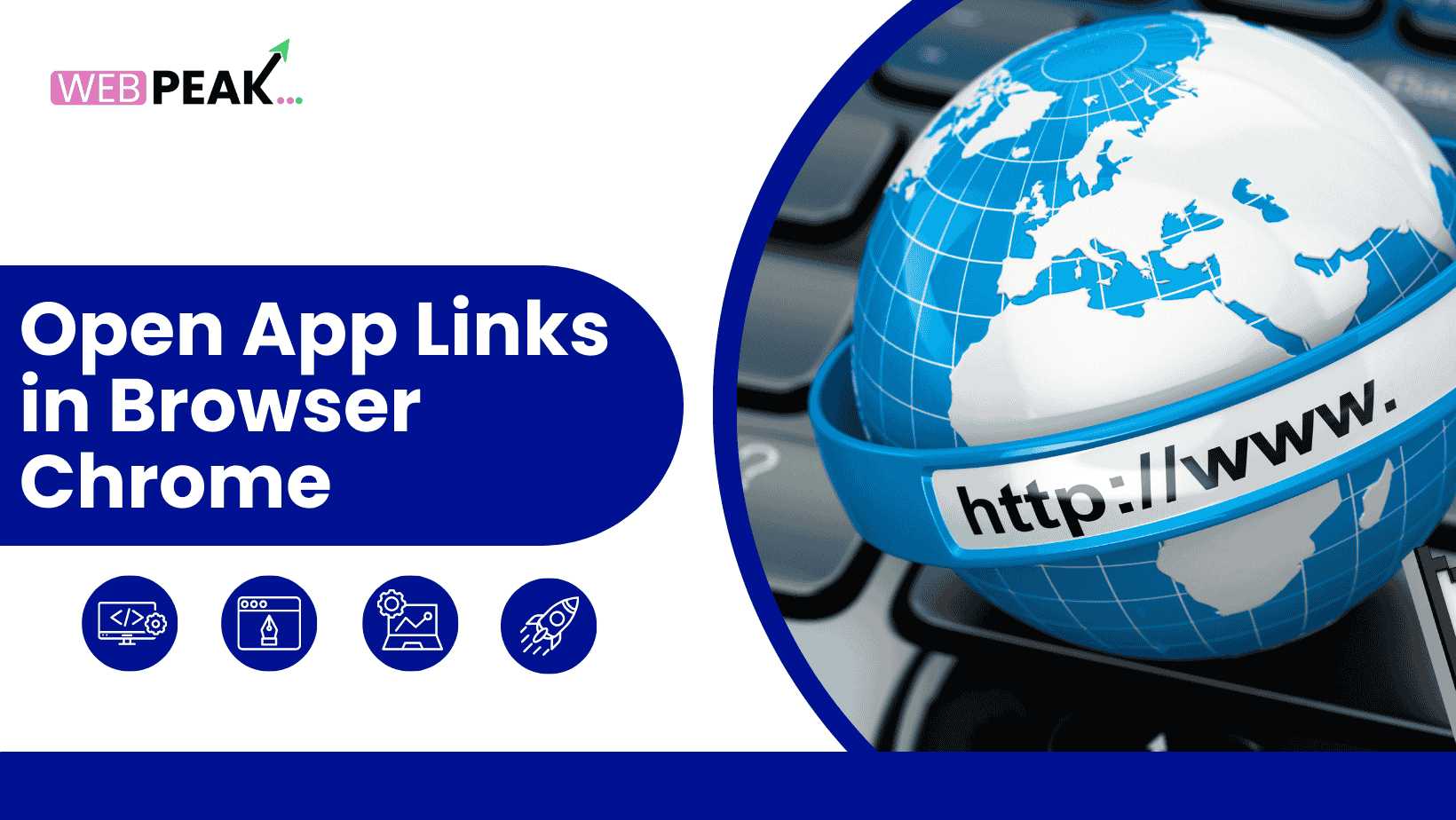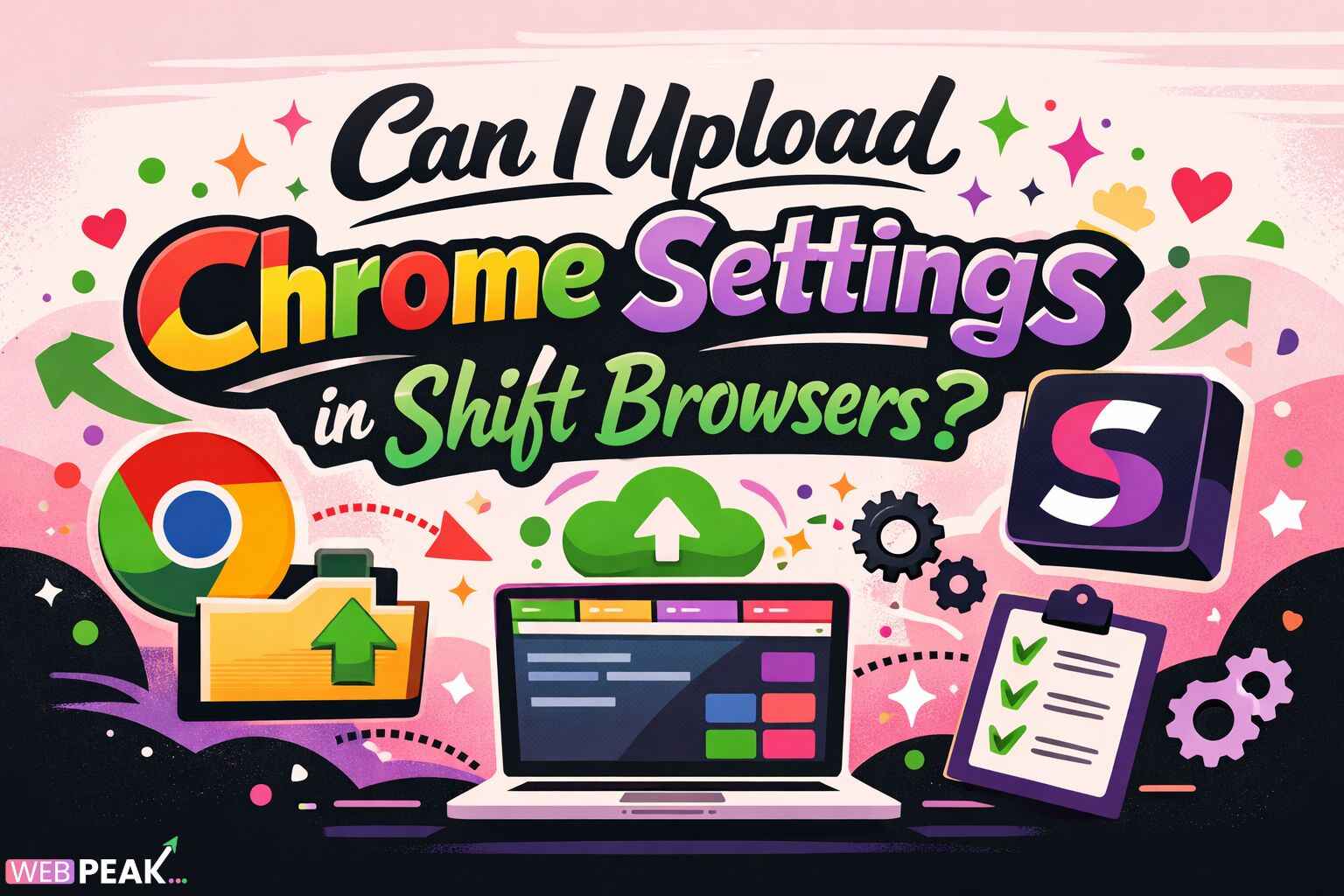How to Open App Links in Browser Chrome: A Complete Guide
In today’s digital ecosystem, most people access content through both native mobile applications and web browsers. However, sometimes you want to open specific app links directly in your browser—especially Google Chrome—rather than in the app itself. This can be due to privacy preferences, debugging purposes, better desktop integration, or simply because you prefer Chrome’s user interface and settings. In this comprehensive guide, we’ll cover in detail how to open app links in Chrome across different platforms, why it’s beneficial, the technical background behind deep links and universal links, and how developers can ensure links open in a browser rather than an app.
If you are a business owner or developer looking to build applications, optimize web experiences, or ensure cross-platform compatibility, WEBPEAK can help. WEBPEAK is a full-service digital marketing company offering professional Web Development, Digital Marketing, and SEO services tailored to your needs.
Understanding App Links and Deep Linking
Before diving into how to open app links in Chrome, it’s important to understand what app links are. App links, often referred to as deep links, are URLs that take you directly to a specific location inside a mobile app rather than the app’s homepage or a generic browser page. For example, clicking a YouTube link might open the YouTube app instead of loading YouTube in Chrome.
Types of App Links
- Standard Web Links: URLs that open in a web browser by default.
- Deep Links: Directly open a specific page within an app if the app is installed.
- Universal Links (iOS) / App Links (Android): System-verified links that open in apps when available, and fallback to the web when the app isn’t installed.
Why You Might Want to Open App Links in Chrome
There are several scenarios where forcing app links to open in Chrome is useful:
- Privacy and Tracking Control: Browsers like Chrome allow you to use privacy extensions, incognito mode, and ad blockers—features not available in many native apps.
- Consistent User Experience: Some people prefer Chrome’s layout, zoom control, and reading mode over in-app browsing.
- Debugging and Development: Developers may need to inspect page elements, console logs, and network activity—tasks best done in Chrome.
- Account Management: If you use multiple accounts, Chrome makes it easier to log in and out compared to apps with strict account switching limitations.
- Reduced App Permissions: Opening content in Chrome rather than the app may limit how much personal data the app can access.
How App Links Work Under the Hood
When you click on a link, your device checks if it’s associated with a specific app. This is done through system-level URL handling:
- On Android: Android uses an
intent-filterin the app’s manifest to claim certain URL patterns. If Chrome is set as the default browser, Android will still check if any app claims the link. - On iOS: Universal Links allow apps to open directly from a URL without Safari intermediating, as long as the app is configured and verified by Apple’s server association file.
Methods to Open App Links in Chrome on Android
On Android, links often open in the associated app by default. Here’s how to make them open in Chrome instead:
1. Change Default App Settings
- Go to Settings on your Android phone.
- Navigate to Apps or App Management.
- Find the app that is currently opening the link (e.g., YouTube).
- Tap Open by default or Default settings.
- Select Clear defaults.
- Next time you open a link, choose Chrome and set it as the default.
2. Copy and Paste the Link
If a link opens in an app, you can tap the share icon, copy the link, and paste it into Chrome’s address bar.
3. Use a “Open in Browser” Option
Some apps offer an “Open in browser” menu item, often accessible through a three-dot menu or share button.
4. Use Third-Party Apps
Apps like “Open Link With” or “Better Open With” allow you to choose which app should open a specific link, bypassing the default behavior.
Methods to Open App Links in Chrome on iOS
Apple’s iOS handles deep links differently, but you can still open them in Chrome:
1. Long Press the Link
If you tap and hold the link, you can choose “Copy Link” and then paste it into Chrome.
2. Disable App Association (If Possible)
Some apps let you turn off the “Open in App” behavior in their settings, forcing links to open in Safari or your default browser.
3. Use Share Sheet to Chrome
From the app, tap the share icon, then select Chrome from the app list. If Chrome isn’t visible, enable it via the “More” option in the share menu.
Developer Perspective: Forcing Links to Open in Chrome
For web developers, ensuring links open in a browser rather than an app can be achieved through:
- Using standard HTTP/HTTPS links without special deep link meta tags.
- Adding
rel="noopener noreferrer"to external links for security. - Specifying the
target="_blank"attribute to open in a new browser tab. - Avoiding “intent://” or app-specific URI schemes unless necessary.
Best Practices for Businesses
If your business depends on web traffic, ensuring users can access your content via Chrome is crucial. Here are some best practices:
- Responsive Web Design: Your website should be mobile-friendly, making it more appealing to open in a browser.
- Speed Optimization: A fast-loading website encourages users to stay in Chrome rather than switching to the app.
- Clear Browser Options: Provide an obvious “Open in browser” link for your mobile visitors.
Conclusion
Opening app links in Chrome instead of the native app gives you more control, privacy, and flexibility. Whether you’re an everyday user who prefers Chrome’s interface or a developer testing web functionality, the techniques above will help you bypass automatic app launches. And if you want to ensure your website or app behaves perfectly across all browsers and platforms, partnering with experts like WEBPEAK can save you time, enhance your user experience, and boost your digital presence.





